|
Welcome to A&A. There are 14 full reviews in this issue. Click on an artist to jump to the review, or simply scroll through the list. If you want information on any particular release, check out the Label info page. All reviews are written by Jon Worley unless otherwise noted. If you have any problems, criticisms or suggestions, drop me a line.
|
|
|
A&A #324 reviews February 2011
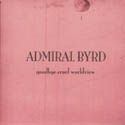 Admiral Byrd
Admiral ByrdGoodbye Cruel Worldview (Princess) Running a variety of pop sounds through a Loveless filter, Admiral Byrd fuzzes out quite nicely. Unlike MBV and many of its imitators, however, a lot of these sounds are electronic even before the processing. This Danish foursome has found a sound that works, and more importantly, it keeps refining that sound as the album goes along. The songs may have the sounds of pop, but they're constructed in a much more free-flowing rock manner. Verse-chorus rules the day, but plenty of these pieces have extended intros, bridges or codas. Also, each song contains more than one sonic idea, and the band seems to like to jam up contradictory thoughts as often as possible. And why not? The result is a otherworldly hash of distortion, electronics and complex vocals. It's hard to hear where this came from, but the better question would be "Where is this going?" I'll be listening for the answer.
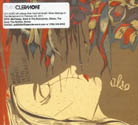 Also
AlsoMusic Belongs in the Background (self-released) Sometimes, an album is simply good. Also doesn't do anything showy. Its songs aren't immediately arresting. There aren't a lot of hooks, and the songs trend toward the midtempo. Yet, after listening, I kept saying, "That's pretty damned good." A column in the Washington Post recently asked, "When is indie rock going to quit being boring?" This is, in fact, a question I've asked myself for a few years now. Interpol? Animal Collective? If they're the best of the "mainstream" indie crowd, indie rock is a tame bunch, indeed. Also may be muted in its sounds, but its ideas loom large. Lyrics are important--but not self-important. The songs come together effortlessly, without any obvious efforts at strain. The songs are uncomplicated. And generally great. There is a vague anthemic strain to some of these songs, but not in that jack-your-fist kinda way. More of a stirring climax than a punctuated boom. Also takes its time. If you give this album an hour, it will repay you tenfold.
Contact:
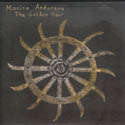 Marisa Anderson
Marisa AndersonThe Golden Hour (self-released) Marisa Anderson calls this album "12 improvisations for guitar and lap steel." Which is true, I suppose. It sounds like she recorded a guitar track, and then added lap steel--though that might be reversed on a couple of songs. The recording methods are far from perfect. There's a bit of hum and other lo-fi disturbances. These only serve to dress up the sound that much more. Like the Ava Mendoza album I reviewed last year, the rawness only intensifies the beauty of the music. Many folks misunderstand the term "improvisation." The basic idea is not to simply go free-form crazy, though that is one possible path. One of the longest-recorded formal improvisational methods is variations on a theme. Bach and Beethoven (and almost every other composer the world has known) used this often. Anderson's pieces generally fall into this category, which makes them sound more composed than improvised. The quality of the music, not the manner of composition, is what matters. And Anderson has crafted a fine album full of introspection and beauty. This album has the general feel of those desultory moments following a movie gunfight. The right thing might have been done, but it was bad goodness. Anderson finds humanity in some gloriously dark places.
Contact:
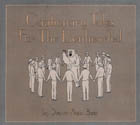 Drawn from Bees
Drawn from BeesCautionary Tales for the Lionhearted EP (Bonefinger) Ephochal, yet seemingly spartan production laid over gripping, yet understated, anthems. If those dichotomies make sense to you, then Drawn from Bees are your band. The vocals are lush with plenty of layered harmonies. The construction of the songs is simple, and each builds up to an almost unimaginable climax. And though I knew what would be happening each time, I was always surprised. So if the early 80s Cure met up with the late 90s Flaming Lips...yeah, something like that. Five songs are hardly enough. This habit will be hard to break.
Contact:
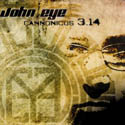 John Eye
John EyeCannonicus 3.14 (H1 Massive) I suppose this could be something of a remix album, as many of the titles reference "Cannonicus." It could also be taken as a grand extension of the whole variations on a theme idea. I dunno. Either way, the music is utterly inspiring. Seemingly drawing from almost the entirety of the electronic canon, Eye has created a set of exceedingly accessible and danceable tracks. There's plenty of aggression as well. So if you happen to be like me and prefer a little contact on the dance floor, we're covered. Not many folks can experiment as much as Eye does and keep their sound right in the sweet spot. These songs travel far afield and do some crazy things, and yet they always end up utterly satisfying. If nothing else, this trip through electronic, noise and industrial sounds is a most entertaining history lesson. The whole is even more compelling than each extraordinary part, which is one reason I'm so impressed. Thrilling.
Contact:
 Ethan Gold
Ethan GoldSongs from a Toxic Apartment (self-released) You know those songs that start small and slow, building into something astounding? Ethan Gold does, and he plays the game exceedingly well. The title of the album comes from where the songs were recorded--asbestos, mold and the like surrounded him as he put this together. I don't know if that atmosphere flavored the songs here, but it certainly made for a colorful title. And the title does describe the mood of these songs, something of a "waiting for the next personal apocalypse" feeling. Not so much downbeat as defiant in the face of imminent failure, a sort of pop-inflected blues. Gold uses all of the current laptop tools to create the music, but with the exception of the beats he has created an organic feel for his sound. Piano (or keyboard, or whatever) is the driving force, but the punchy electronic beats keep these pieces from getting depressing. Rather, the overall effect is cathartic. Life is bad, and sometimes you can't avoid the shit that seems to be eternally falling from the sky. But if you can survive the worst, then maybe you can start building again. And somewhere in there is the kernel of an idea as to why we persevere.
Contact:
 The Last Royals
The Last RoyalsThe Last Royals EP (Ooh La La Recordings) Deliberately clunky electronic pop. With "real" drums. Each song is almost exquisitely calculated, but all that craft creates an unusually compelling atmosphere. Sure, it's artificial, but beauty is beauty. The Last Royals largely stick to pop form on these five songs, but they borrow plenty of rock and americana elements. All spun into an almost-cotton candy architecture. Gossamer and sweet, not to mention sticky. And when it's gone, you've gotta have more. I'd like to hear the full monty. Five songs is barely enough for a taste. Eric James and Mason Ingram have a way, and I'd like to hear more. Much more.
Contact:
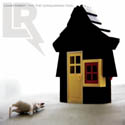 Lousy Robot
Lousy RobotHail, the Conquering Fool (Hit Records International) One of the good things about living off the musical map (say, in Albuquerque), is that you get a new perspective on popular sounds. The Brits revolutionized rock and roll 50 years ago because they didn't have the Jim Crow baggage. Lousy Robot digs into the current trends of mopey indie rock and finds real gems. Occasionally punchy, but more often downbeat, these songs always home in on the beauty within the ordinary. The skill with which these folks pull extraordinary melodies out of mundane surroundings is astonishing. The sound is bright, which helps to emphasize the "Eureka!" moments within each song. Even with the mopiest intro, there's always hope that the song will blossom. And, indeed, they all do. Sneaky good. This is one of those albums that sounds pretty good on the first listen, damned good on the second and monstrously brilliant on the fifth. Just hit repeat.
Contact:
������������������������������ 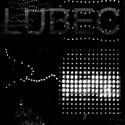 Lubec
LubecNothing is Enough EP (The Acme Thunderer) Fuzz-bombed new wavey stuff--imagine the Reid Brothers producing I'm the Man--that is simply too bombastic and gorgeous to stick in the closet. Pop anthems are a tricky thing, though Lubec does seem to have found the magic formula: Just add distortion to the soaring choruses. I know, it's not that simple. But these folks make it sound easy. And I like that a lot. Not a single clunker in the six songs here. I sure hope the band can keep this up for an entire album. That would be almost too much to bear.
Contact:
������������������������������������� 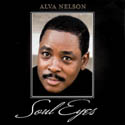 Alva Nelson
Alva NelsonSoul Eyes (self-released) Nelson is a pianist and leader of an old-school jazz trio. Well, piano, bass and percussion. The players switch out. Which only makes sense, as these tracks were recorded between 1993 and 2003. Nelson's touch on the keys is warm and inviting. Even when his playing gets manic, there's a roundness to his sound. Melody is his coin, and he plays it well. He takes on a few standards ("'Round Midnight" closes out the album), but most of these songs are his own. He slips into a little boogie woogie and locked hands style now and again (most impressively on "Sanctified Blues"), but the easiest reference would be Vince Guaraldi. You know, the guy who scored the Peanuts TV specials. Guaraldi was a serious jazz pianist who played with plenty of heavy hitters. No shame in any comparison, at least in my book This is fairly accessible, but hardly "happy jazz." Nelson isn't exceptionally adventurous, but he's willing to push himself more often than not. A most satisfying album.
Contact:
�������������������������������������  So Adult
So AdultRookie cassette/digital EP (self-released) Straight outta Minneapolis, circa 1984 or so. Perhaps a bit more 'Mats than Soul Asylum, with the occasional Husker Du buzzsaw creeping in now and again. Never mind that these boys are from Bellingham. Doesn't matter. Their souls are in Minnesota. These rough-hewn anthems are loud, crunchy and ever-so-glorious. Nothing complicated, of course. Complications would completely destroy everything. Simplicity is bliss. Orgasmic, really. Four songs (with three short interludes) makes this EP a bit skimpy, but the goods are solid. Don't forget to play loud. Very loud.
Contact:
������������������������������������� 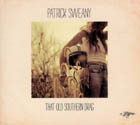 Patrick Sweany
Patrick SweanyThat Old Southern Drag (Nine Mile) Rolling down the road, Patrick Sweany keeps it steady as she goes. After some earlier success, he hitched up and headed to Nashville in hopes of fame and fortune. Fame and fortune may be fickle, but good music is good music. Sweany specializes in bluesy renditions of old-school rock and roll. A bit more rough-hewn and raucous than yer average americana sound, though certainly in that ballpark. Nashville did do right by Sweany in one way: This album is pitch perfect. The production brings out the sweetest and saddest notes in each of these songs without getting in the way. Like too much makeup on a beautiful girl, too much meddling can leave a great song staggering under the weight of the sound. Not here. The songs are unfettered and free, with just the right emphasis in the right spots. Folks might prefer to hearken back to folks like the Band, but Patrick Sweany is here today playing down another lost highway. And he's got a few new tricks to share. Very nice.
Contact:
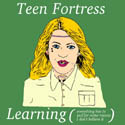 Teen Fortress
Teen FortressLearning (Everything Has To End For Some Reason I Don't Believe It) (self-released) Ten songs, twenty minutes. Very punk. Well, in theory, anyway. It is true that these songs were recorded primitively. At least, they sound primitive. This album is a solo effort from Zach Doney, singer for Bang Bang Eche, a New Zealand band. And at closer listen, it's obvious that the "primitive" sounds are a result of some serious production work. I like that. Maybe he pinned the levels in the mastering, or maybe the distortion came in a little earlier. I dunno. These songs take well to the mess. Kitchy, but cool. Doney has described this album as the songs he needed to write so that he could write the songs for the new BBE album. Sometimes catharsis can be even more productive than what comes later.
Contact:
�������������������������������������  The Way We Were in 1989
The Way We Were in 1989The Way We Were in 1989 (self-released) The inspiration for the band's name is a mystery to me, as Kelly Dale and Joyell Dunay play the sort of music that might be best appreciated in a Parisian coffeehouse for American ex-pats. I remember 1989, and it didn't sound anything like this. And that's certainly one reason to recommend this album. The pieces amble along amiably, often (though not always) coalescing into something approaching traditional songs. Much of what comes along, however, is stream-of-consciousness, observational fare. Existential, from both a musical and lyrical standpoint. Not really complicated, though. And hardly grandiose. TWWWI1989 isn't out to change the world. It just wants your tips in the jar. At least, that's how it sounds to me. The sort of twisty, understated album that probably would drive most folks mad. Find some patience, however, and you ought to find something wonderful.
Contact:
������������������������ Also recommended:
Kasey Anderson and the Honkies Heart of a Dog (Red River)
Annabel Here We Are Tomorrow 7" (Tiny Engines)
Andre Afram Asmar Harmonic Emergency (Mush)
Boy King Islands Fall (Plustapes)
Clover Seeds The Opening (The Laser's Edge)
Empresarios Sabor Tropical (Fort Knox)
The Fervor Arise, Great Warrior (Karate Body)
Guitaro JJ's Crystal Palace (Help Computer Records)
Hafdis Huld Synchronized Swimmers (OK! Good)
The Heligoats/Sam Humans Let Loose/Live Free split 10" (Greyday)
Hex Map Cryptidography (Claw Solutions)
The Jezabels Dark Storm EP (self-released)
Chad Kichula Killer (self-released)
La Resistance Philosophy (Superphonic Records)
Nomoredolls Another Way of Living (self-released)
Open Mike Eagle Art Rap After Party EP (Mush)
Poor But Sexy Let's Move In Together (self-released)
Rejuvenation Trio Rejuvenation Voyage (Edgetone)
Roommate Guilty Rainbow (Antephonic)
Seditius Carne da Macello (Tornado Ride)
Shalini Magnetic North EP (Paisley Pop)
Stik Figa From the Top EP (Mello Music Group)
Sun Splitter Sun Splitter (Land of Decay)
Sweetkiss Momma Revival Rock (self-released)
The Tall Ships On Tariffs and Discovery (self-released)
Various Artists Electric Carpets (Record Label Records)
Watts On the Dial (self-released) |
|
return to A&A home page